– 29 December, 2015
I hope that the savings achieved here - through reducing the cost of building materials - allowed for more funds to be channelled into the commissioning of new work. This is exactly where the funds should be going. Either way, the Auckland Art Gallery Toi o Tāmaki has invested in a significant number of new commissions which should be acknowledged. What better than investing in wet paint to showcase contemporary painting in Aotearoa, and artists have to be paid (somehow) in order to continue practising.
Auckland
Twenty NZ painters
Necessary Distraction: A Painting Show
Curated by Natasha Conland
28 November 2015 - 4 April 2016
Entering Necessary Distraction, the Auckland Art Gallery’s new contemporary New Zealand painting show, the first thing you encounter is the exhibition design. There are internal partition walls with large sections of unclad timber framing, glints of exposed steel trim, and grey GIB panels punctuated with white plaster and the occasional pencil construction line. It is an encounter which frames the wider experience of the show.
This self conscious design provokes a response and will divide audiences. Its unpainted, unfinished aesthetic displays a risk taking which can be unexpected in large public galleries. Irrespective of the individual opinions emerging on the relative success of the endeavour, the risk taking itself can be widely celebrated.
Obvious as it sounds, large exhibitions cost a lot of money. Reducing the use of building materials delivers an innovative exhibition solution within limited means. Mirroring contemporary artists’ mission to make magic on a budget, is a major public art institution delivering on the ideological imperatives of austerity, to which they too find themselves accountable. Necessary Distraction confidently frames this use of public (and private) monetary resources as material, and foregrounds it as a form of content. A truth to materials perhaps, physical and financial.
I hope that in this case the savings achieved here - through reducing the cost of building materials - allowed for more funds to be channelled in to the commissioning of new work. This is exactly where the funds should be going. Either way, the Auckland Art Gallery Toi o Tāmaki has invested in a significant number of new commissions which should be acknowledged. What better than investing in wet paint to showcase contemporary painting in Aotearoa, and artists have to be paid (somehow) in order to continue practising.
It’s been a long time coming. The last exhibition dedicated to painting at the Auckland Art Gallery was Surface Tension: Ten Artists in the 90’s curated by Tina Barton in 1992. Surface Tension featured Barbara Tuck who reappears here. There was also Leonhard Emmerling’s exhibition of New Zealand painting shown alongside celebrated international practitioners, PX: A purposeless production / A necessary praxis, at St Paul Street Gallery in 2007. PX also included current participants James Cousins and Simon Ingram.
Necessary Distraction asks the implicit question, what is it to generate a show dedicated to contemporary painting in the here and now? In charting certain recent developments and pointing toward new directions, it manifests as more snapshot than survey, partial and provisional. Its stated ambition is to reconsider painting’s currency by commissioning (and selecting) a series of highly speculative works which are marked by suggestion and a seeming lack of resolution, qualities which are also filtered in to the design of the spaces.
Within the architecture there is a vague feeling of being on a building site, and intimations of do-it-yourself renovation in the exhibition design. A complex matrix of political economies, including the deficiency of housing construction rates, the Christchurch “rebuild”, grossly inflated property markets, the controversial sale of state housing, and the popularity of reality television shows ‘The Block’ and ‘Grand Designs’ spring to mind. These influences effect us where we live, and look to continue for some time. In this context, Necessary Distraction’s objective to operate in the “present continuous” finds a parallel in the adage, “a builder’s house is never finished”.
The Auckland Art Gallery’s plastering is rendered by specialist external contractors, not by internal or casual gallery technicians who are often artists themselves. Hence the markings these contractors make are primarily functional, and intended to disappear beneath two or more coats of gallery white. Yet within Necessary Distraction the broad swathes of plaster begin to look decidedly painterly.
It would be logical that the inspiration for the show and its design would respond to celebrated contemporary painting practice itself. It would also follow that in doing so the Auckland Art Gallery would reflect on its own exhibition highlights. In a 2005 interview with curator Robert Leonard, Judy Millar spoke about her new installation work at the Gallery, which could have provided such an inspiration:
I’m thinking of my paintings like construction sites. You see how things are placed on a construction site. On the one hand it’s chaotic, on the other it has this necessity to it. Clear decisions have been made to put this here, that there, but there’s no overarching governing idea.
She goes on:
At first I was going to simply unclad a wall, expose its insides. In the end I ended up building an unclad wall. The perversity of creating an undone structure appealed to me. It’s not exactly a wall, more a model, a 1 to 1 scale model of an unclad wall. Look how sharp and fetishised the construction is, with its thinned timber. It’s a conceptually slippery object. It looks like furniture or a Sol LeWitt sculpture. It allows views through to the paintings. It changes the quality of the space and sets up the idea of looking through, looking through the wall and looking through the paintings. It sets up all kinds of frames for the paintings to kick against.
There are galleries in Necessary Distraction where the interplay of wall and work is more successful than others. In the magic moments a painting and its context enter a new material and poetic dialogue, the relationship creating an unforeseen augmentation, complication and enrichment of the work. These contrasts resonate strongly in Kim Pieters’ It was when I said, ‘There is no such thing as truth’, that the grapes seemed fatter (2015), Saskia Leek’s Untitled (2015) [with the black banana], Oliver Perkins’ Lyttleton Heads (2015), Adrienne Vaughan’s Plyx (2013), and James Cousins’ plate.303 (Arc) (2014), in particular.
Some claim that the exhibition design conflicts with the art works, overshadowing or competing with them: an unnecessary distraction. This is best decided within the exhibition spaces themselves, rather than in theory, particularly as many of the pieces do not share these raw, unconventional backdrops.
Yet could some audiences themselves be unnecessarily distracted? If the walls were white where would critical attention be focussed? The selection of artists and works, the textual accompaniment (press release, wall text, catalogue), the conversations created within and across the exhibition spaces, among other dimensions, would occupy a more central position. Such elements remain essential in determining what it might add up to, and where this might be taking us. These questions remain, just as the exhibition itself encourages, within a longer view.
There is a diverse offering across the twenty participating artists, which also includes a number of collaborations, pairings within galleries, and artist partners co-exhibiting. With such a range, Necessary Distraction is bound to confront your subjectivities. Personal highlights include the work of Andrew Barber, Dan Arps, Simon Ingram, Ngataiharuru Taepa, Oliver Perkins, James Cousins, Jeena Shin, Patrick Lundberg and Adrienne Vaughan.
The first gallery establishes the most pronounced of the juxtapositions between art work and exhibition design, displaying a suite of Andrew Barber’s tennis court paintings from 2004 to 2012 across two large walls of plastered GIB. Barber, Curator of Contemporary Art Natasha Conland and the exhibition design team pull it off.
Conscious of his position at the entrance, Barber also wedges a large custom made trapezoid shaped canvas, Portrait: La Demoiselle (2015), in the middle of the gallery. Freestanding from floor to ceiling, it confronts viewers as they enter with its unusual form, clashing colour scheme and sewn linen construction. This placement also affords an examination of its wooden stretcher and quilt-like composition from behind, echoing its surroundings by laying bare the mechanics of its fabrication. Its twisted angle also directs visitors’ movements in to other galleries, acting as a strategically placed partition.
Dan Arps, who is primarily known as something other than a painter, has cast objects which are as much sculptures as paintings. Both frame and surface, they bear the traces of moulding grout, epoxy, polyeurethane and paint with crude tools and by hand. The gaping orange mouth of Gutter Witch (Linda’s Sunset) (2015) commands attention. However, the adjacent Painting for Welfare Office (Blonded Yellow/Orange) (2015) packs more of a conceptual punch, using the same vivid orange (it looks colour matched from the WINZ logo), but suitably burying it under lazy layers of whitewash. One can imagine the latter, a) never making it to said location, or b) offending just about everyone with its ugly, messy, impenetrable facade. Art as if made for the state benefactor while living on the benefit.
Simon Ingram’s latest machine painting experiment, Random Walk Exercise (2015), consists of arrays of broad grey lines which overlap a suite of cardboard panels and extend on to the gallery walls. They were created using a robotically assisted paint brush system, and ‘Random Walk’ artificial intelligence software, which the wall label states, “describes the path of a foraging animal, the behaviour of gas and the fluctuation of share market stocks.” The use of computational gestures - random yet programmed - activates a hybrid field between human and artificial intelligences rich with possibilities. The ‘machine’ grey paint - in straight lines, freeform tracings within demarcated areas, and random drips - explore the markings these intelligences make in concert. The use of oils consciously references painting’s history, while its greasy separation into pigment and binder when applied to the cardboard’s surface make them appear as if painted yesterday.
Although this work was created in the gallery, it remains static for the show’s duration. A highlight over the years has been watching these works evolve in real time, as Ingram’s makeshift machines push paint around. I would have liked to see these accumulative acts continue, where possible, throughout the exhibition’s duration, the Auckland Art Gallery being one of the few institutions with the resources and staffing to facilitate this. There is something primal about wet paint: it is slippery, visceral and alive.
Ngataiharuru Taepa’s work contributes a valuable dimension to the conversation between surface and sculptural form, material and meaning, running through Necessary Distraction. Taepa reworks inexpensive industrial boards in exquisitely crafted wooden composite paintings, playing off the colours and tones of found hardboard, particle board and pegboard. These materials are derived from commercial wood pulp, in tension with some of the titles which explicitly recall Tāne, the God of the forest. The influence of Gordon Walters appears evident in the highly stylised koru forms in Tane Patupaiarehe (2015) and Te Tini a Pitau (2015) in particular; but more importantly, the Māori traditions Walters was inspired by and problematically borrowed from. Taepa re-appropriates this western material, carving them up and jigsawing them in to powerful, fresh new forms.
Oliver Perkins’ suite of abstract panels in acrylic, primer, ink and rabbit skin glue are formally graceful, while their double aluminium stretchers create irregular sculptural reliefs which in turn cast unexpected shadows on the wall. Their palette is sampled from post-earthquake Barbadoes Street in Central Christchurch - as Perkins draws from his local environment after nearly a decade away - to subtly reference the aesthetics of “the rebuild”.
James Cousins’ new and recent works reward the longer view the show promotes, with their layered, hide-and-reveal construction, celebrating experimentation and complexity. The refashioning of published studio portraits of flowers also intertwines the influences of photographic and landscape painting traditions. Viewers will also enjoy the white space afforded them in his concurrent mini survey Restless Idiom, curated by Ioana Gordon-Smith at Te Uru Waitakere Contemporary Gallery, as each exhibition informs the other. Within the Auckland Art Gallery’s presentation, plate.3 (Strip) (2015), and plate.303 (Arc) (2014) are spectacular.
Jeena Shin’s two tall canvases are productively complicated by Motus, AAG (2015), an encircling wall painting of asymmetrical geometric forms (generated by folding an A4 sheet of paper) using a gloss version of the Gallery’s own white paint. These angular shapes are precisely masked and laboriously layered to create a room which shimmers under the overhead lights as you move around it.
Patrick Lundberg’s diminutive piece, No title (2015), comprised of 24 small wooden wall mounted spheres, hand painted in acrylic, gesso and varnish, almost disappear in the material context of the show. Yet this is precisely the point. They catch you as you nearly miss them, slow you down, and draw you in closer to inspect their delicate mark making and playful placement.
In the more figurative camp, Adrienne Vaughan’s oil paintings on canvas and paper hold their own within the company they keep, despite their comparatively intimate scale. They hover in an unresolved yet assured space between representation and abstraction, suggesting a number of open ended readings while maintaining their fundamental ambiguity.
The exhibition’s introductory wall text asserts that the information saturation characteristic of our age is a form of constant distraction, and claims that the works included here attempt to transform distraction in to engagement. Though they inevitably add to the image stream, many of the works do slow us down enough to activate other ways of relating to them than rapid, unconscious consumption. But what do they do with our attention once they have it?
The extent to which the artists in Necessary Distraction address the pressing concerns of the moment is yet to be determined. On the surface these concerns appear absent, or muted at best. The irony of Dan Arps’ grotesque Painting for Welfare Office, and Andrew Barber’s reference to Picasso’s infamously controversial Les Demoiselles d’Avignon (1907), do possess something resembling an edge. And as discussed, there are a number of more subtle political gestures at play in selected works, those by Taepa and Perkins in particular. Yet I can’t shake the feeling there is something missing.
In Everything is not alright, Mark Amery recently wrote of Thai artist Sutthirat Supaparinya’s post-residency exhibition Steal This Book at Toi Pōneke in Wellington. He states, “it did have something New Zealand work only occasionally has - an active engagement with political responsibilities as a citizen.” Amery further probes our artistic conservatism:
But are New Zealand artists guilty of self-censorship? We are all of course to a degree. But perhaps another word for it in New Zealand is mildness. I don’t think there’s any fear of consequences, but I do think there is hesitation over the market’s interest in the political as serious, complex work. Certainly, in a year of hearty discussion of flags, refugee quotas, TPPA, terrorism and the commemoration of war there’s been remarkable silence across the arts. Pity.
It is not that Necessary Distraction sets out to depoliticise painting; curators often cook with those ingredients close at hand, though that doesn’t let them off the hook. However, the question of social responsibility might be more productively leveled at artists themselves. I’m not suggesting that activism is an artistic requirement, but it would be refreshing to see more work with something to say - and to a wider public - beyond what can too often appear as empty material explorations for a tiny insider elite. War, poverty, refugee crises, human rights, mass surveillance, climate change…anyone? Is it just me, or is it heating up in here? Shirk it or not, contemporary artists inherit legacies of cultural leadership. Given the state of the world, surely there is room for more direct engagement.
Natasha Conland, in citing the influence of biennale culture on the formulation of the exhibition, immediately got me thinking about the implications of another possible show in two years, perhaps longer to be realistic. It is true that painting features heavily in other exhibitions of contemporary New Zealand art, yet the implications of a rigorous (and potentially ongoing) commitment to surveying contemporary painting would have some rewarding effects. It could further reflect on painting’s crucial contribution to New Zealand art histories, while generating further opportunities for our substantial number of talented painters.
Necessary Distraction has successfully established a dynamic and diverse platform to reconsider painting’s currency in Aotearoa. Its partial and provisional outlook also suggests a multitude of possible futures beyond itself.
More please.
Emil McAvoy
Recent Comments
John Hurrell
This panel discussion might be enlightening... http://www.aucklandartgallery.com/whats-on/event/panel-discussion-exhibiting-art-for-the-now
Owen Pratt
A book? Praps half the pages will be glued together with no more nails and gib compound. Or is the ...
Emil McAvoy
John, I took the comment as both humorous and true. We would be deluding ourselves to think that Auckland Art ...
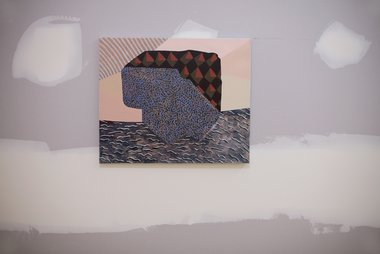
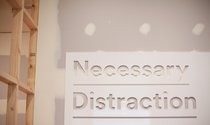
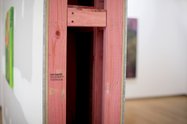

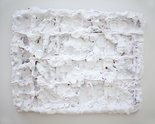


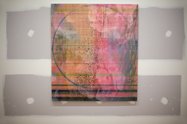
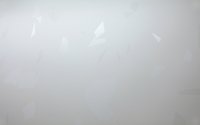
 Two Rooms presents a program of residencies and projects
Two Rooms presents a program of residencies and projects Advertising in this column
Advertising in this column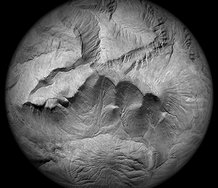
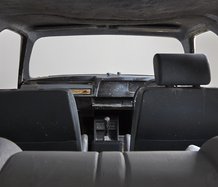
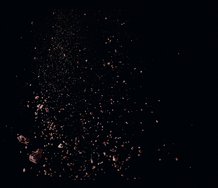
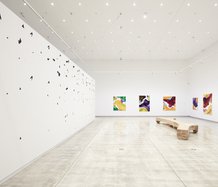
This Discussion has 10 comments.
Comment
Roger Boyce, 10:35 a.m. 30 December, 2015 #
Against my better judgement: Some accomplished painters were drafted for this team-building exercise - particularly the inimitable Nick Austin and those from Anna Miles Gallery. But it will be difficult to see actual work(s), through an upstaging curatorial agenda. The exhibition design - like the show's flippant title - functions as a demotion; a commiserable attempt to institutionally subordinate. A bid to dragoon a discipline which, year upon year (despite parochial resistance) statistically dominates private & public galleries, museum, and other exhibition spaces (and dare I say it) sales, internationally.
This statement is all I have time, or energy, to contribute to any possible discussion of this show or review. Thanks for your understanding.
Besos
Owen Pratt, 9:41 a.m. 5 January, 2016 #
Why would I want to see an exhibition where a fundamental question would be: has the painting survived the curation? If this is current presentation practice, I would question the current acquisition process as well; it is probably mired in the same egotistical nonsense.
Agatha Cinque, 10:43 p.m. 5 January, 2016 #
"Within the architecture there is a vague feeling of being on a building site, and intimations of do-it-yourself renovation in the exhibition design. A complex matrix of political economies, including the deficiency of housing construction rates, the Christchurch “rebuild”, grossly inflated property markets, the controversial sale of state housing, and the popularity of reality television shows ‘The Block’ and ‘Grand Designs’ spring to mind."
"Yet within Necessary Distraction the broad swathes of plaster begin to look decidedly painterly."
Might be trying to build a few too many bridges a bit too far here. Also, did you fact check your financials?
The exhibition, it seems, needs a more 'thrusty' appraisal. To match its (presumed) aspirations.
Emil McAvoy, 6:55 p.m. 25 January, 2016 #
The allusion to the cost savings afforded by the exhibition design was made by the curator during the media preview as one motivation for the design.
Given these cost savings also appear self-evident (limited cladding and no paint used on the partition walls), I saw no reason to attempt to fact check their financials.
As to the critical value of my interpretations or claims, I will leave this to audiences to decide.
John Hurrell, 8:38 p.m. 17 February, 2016 #
Francis McWhannell's recent review of this show:
http://pantograph-punch.com/post/considering-necessary-distraction-a-painting-show
peter madden, 7:39 a.m. 12 March, 2016 #
In reference to the paintings hanging on unfinished walls . One observes that one never sees paintings hanging on walls in such a condition . After looking at art in all kinda venues I for one have never seen this , thankfully I never will , as it seems visually and conceptually unhelpful. I am reminded of that trope " sculpture is something you back into as you look at painting" in this instance the painting has been hung on the sculpture ( white walls in the context of viewing painting says "the rest of the world") This seems to negate the intention of the artists whose work had been given the said walls. That is to say the artists chosen it is said give us a " pause" a release from the tyranny of contemporary life . How can We assess that premise when the background is such a bizarre curatorial conceit . A conceit said to echo the proposition or provisional aspects in these paintings . It seems to me that this (the walls) is an annoying tautology one that demeans and offers a weird unpracticed didacticism , an unnecessary prop?
John Hurrell, 9:20 a.m. 12 March, 2016 #
Unless it is purely an allusion to Judy Millar's New Gallery project with Robert Leonard, some sort of footnote Natasha wants to insert into her exhibitory 'statement'? Or she wants to ingratiate herself with the AAG accountants and save the Council money. (She said this at the Press tour and at the time I thought she was being humourous. What else would you think?)
The Necessary Distraction book will be out soon. Maybe that will provide some elucidation.
Emil McAvoy, 10:02 a.m. 19 March, 2016 #
John, I took the comment as both humorous and true. We would be deluding ourselves to think that Auckland Art Gallery doesn’t have to hustle like the rest of us.
Thank you for owning your ideas in public Peter. So few do in my experience. I also remember encouraging you to do so via Facebook, which as a platform can act as an echo chamber in its most insular moments.
Perhaps one of Necessary Distraction’s most important contributions will be in galvanising discussion and debate, which it appears to have achieved so far.
John Hurrell, 10:53 p.m. 21 March, 2016 #
This panel discussion might be enlightening...
http://www.aucklandartgallery.com/whats-on/event/panel-discussion-exhibiting-art-for-the-now
Owen Pratt, 10:15 a.m. 19 March, 2016 #
A book? Praps half the pages will be glued together with no more nails and gib compound. Or is the written curatorial word sacrosanct?
Participate
Register to Participate.
Sign in
Sign in to an existing account.